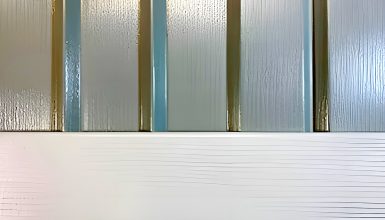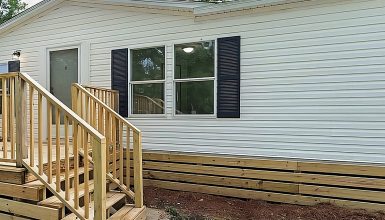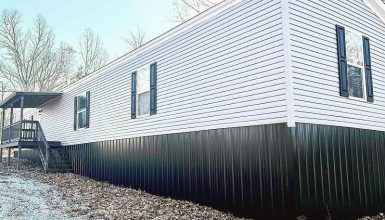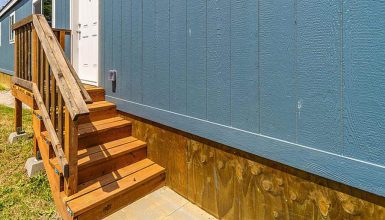Mobile home skirting is crucial in protecting your home, especially under extreme weather conditions. It protects against cold, heat, wind, and even pests. Selecting the suitable skirting material becomes vital for those living in areas facing harsh weather. Here are some top choices:
1. Vinyl Skirting
Vinyl skirting is a popular choice for many homeowners. It’s easy on the wallet, and you can set it up without a big fuss. This makes it a go-to for giving your home a neat finish without breaking the bank.
But it’s not all sunny with vinyl. In freezing weather, it can get brittle and crack. It’s not ideal if you’re in a place that gets super chilly.
Here’s a pro tip: Add foam board behind the vinyl. This boosts insulation, keeping the area under your home warmer. It’s a smart move that can make a big difference.
2. Metal Skirting
Now, let’s talk about metal skirting. If you’re looking for something tough, metal is your friend. It laughs in the face of high winds and isn’t easy to damage. This makes it perfect for homes where storms are a regular guest.
However, metal has its achilles heel: rust. If it gets wet often, rust can start to show up. But don’t worry, there’s a way to fight back.
Keep an eye out for rust spots and tackle them early. You can also use protective coatings to keep rust at bay. A little maintenance goes a long way in keeping your skirting looking good and working well.
3. Concrete Skirting
Concrete skirting is like the superhero of the skirting world. It’s super strong and offers top-notch insulation. This means your home stays warm in winter and cool in summer. Plus, it adds solid stability to your home, making it feel even more secure.
But, every superhero has their kryptonite. For concrete skirting, it’s the price tag. It costs more upfront than other types. Yet, for many, the investment is worth it. It lasts for ages with barely any need for touch-ups.
Concrete skirting could be your best bet if the weather swings from hot to cold. It keeps the temperature in your home just right, no matter what’s happening outside.
4. Insulated Skirting
Insulated skirting is like wrapping your home in a cozy blanket. It combines vinyl’s ease with the warmth of foam insulation. This duo works together to keep the space under your home at a steady temperature.
Why is this great? First, it slashes your energy bills. Your home stays warmer in winter and cooler in summer without overworking your heater or AC. Second, it’s a champ in places where the weather can’t decide. If one day it’s freezing and the next it’s toasty, insulated skirting has got your back.
Choosing insulated skirting is smart for anyone dealing with wild weather changes. It’s an investment in comfort and savings, keeping your home cozy and your wallet happy.
Choosing the Right Skirting for Your Climate
Picking the right skirting for your home is like choosing the perfect outfit. You need something that looks good but works hard to keep you comfortable, regardless of the weather.
First up, think about your local weather. Is it more blizzards or beach days? Do you get visits from hurricanes, or is it the sun that’s always on your doorstep? This step is critical because the weather decides which skirting material will stand by your home through thick and thin.
Next, match the skirting to your weather challenges. If you’re dealing with heavy snow, you might lean towards concrete for its warmth and durability. Metal could be your ally in windy areas, standing firm against gusts. Insulated skirting could save the day (and your energy bills) for places where the temperature flips like a coin.
But let’s not forget about looks. Your home’s skirting should make it shine. Luckily, skirting comes in various styles and colors. So, you can choose one that battles the weather and wins in the curb appeal department.
In short, choosing skirting is balancing what you need with what you love. It’s about preparing your home for whatever the weather throws at it, all while keeping it looking its best.






















